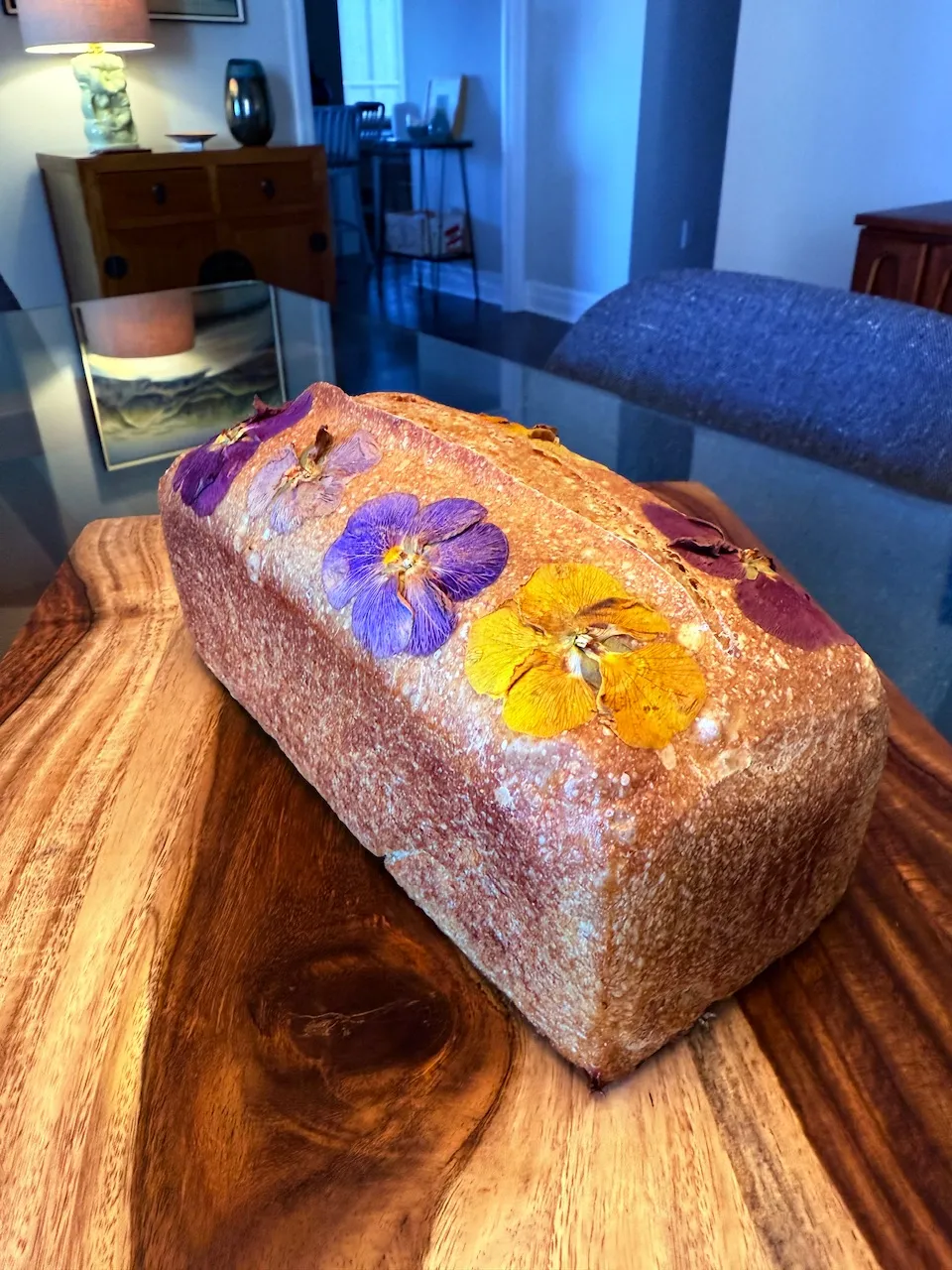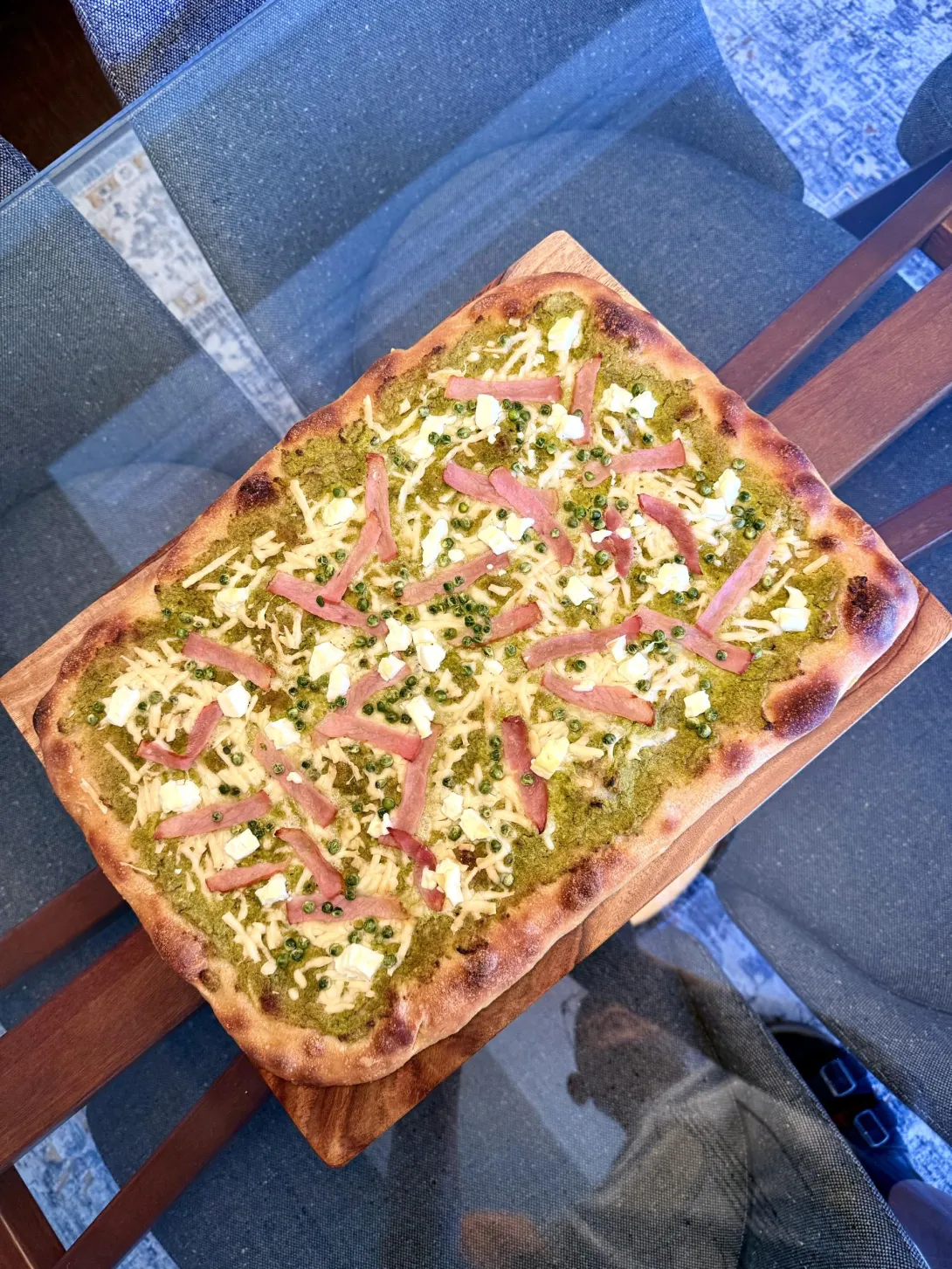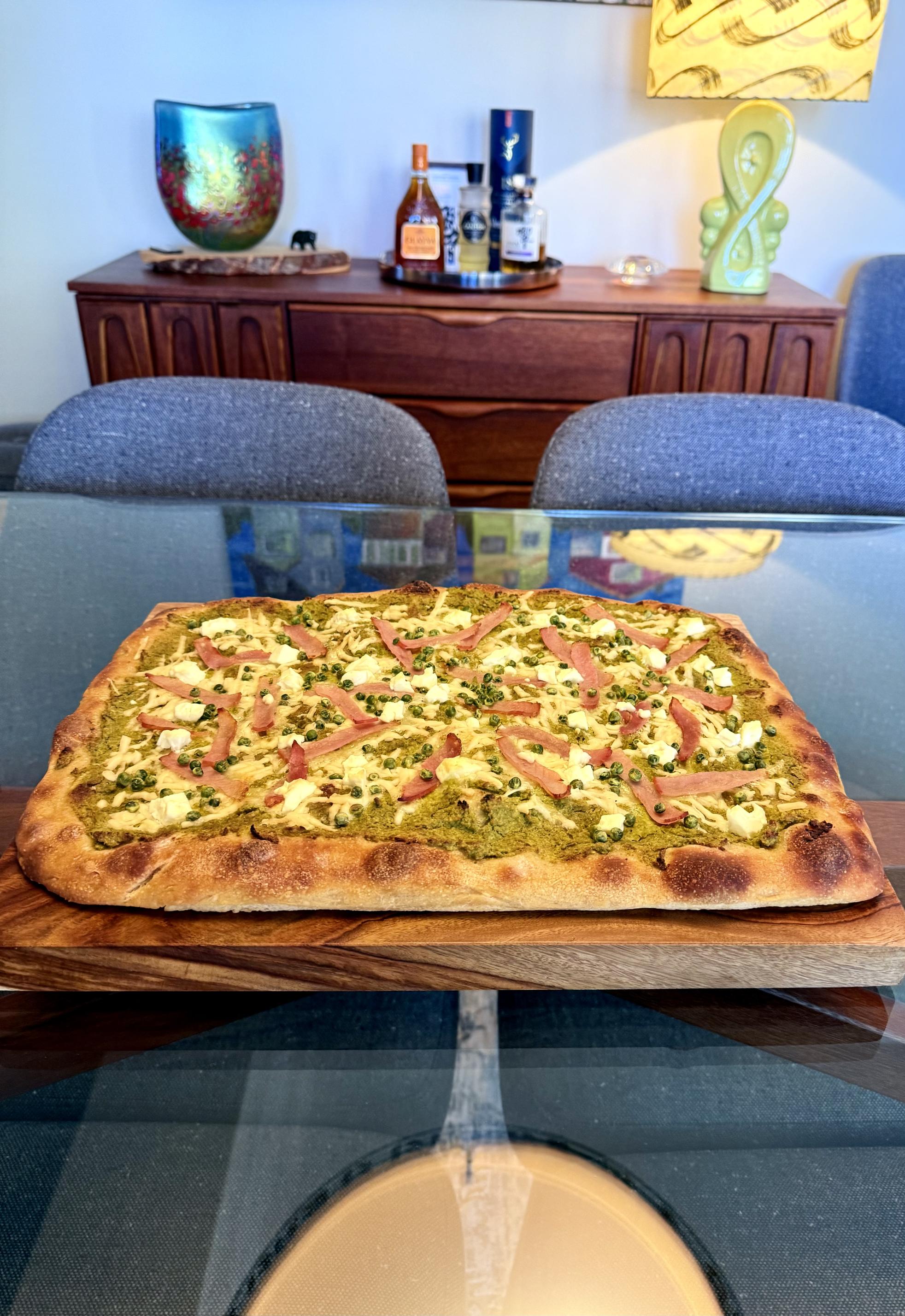Durum Whole Wheat Ricotta with Pecans Sourdough

Made with fresh milled durum and Star Dust whole wheat. I added some Italian-style fresh ricotta for softness and some honey for a little sweetness.
Pecans were chopped roughly and added at the end of mixing. I probably should have laminated the pecans in which would have distributed them more evenly, but I chose to be lazy :).









